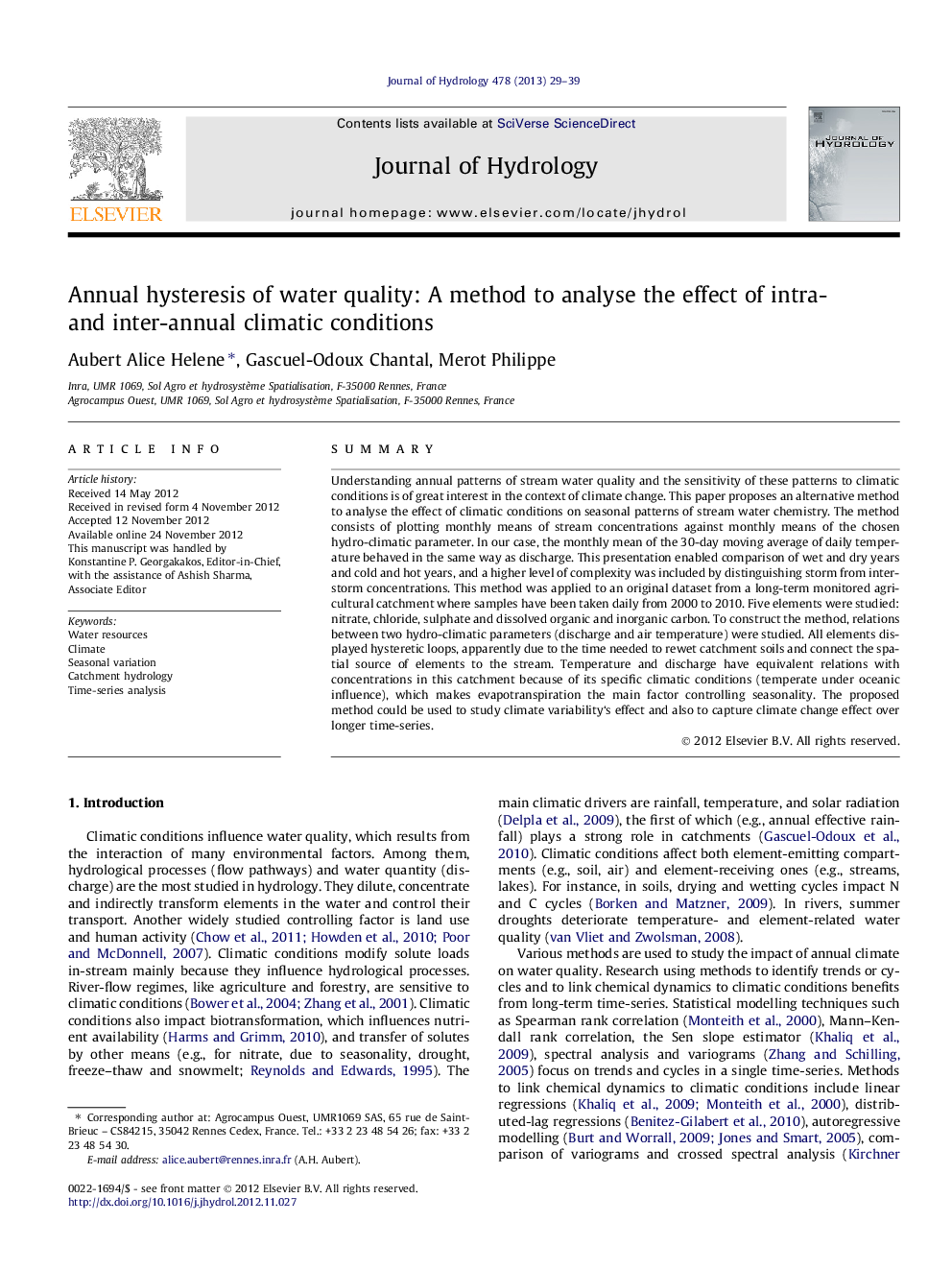| Article ID | Journal | Published Year | Pages | File Type |
|---|---|---|---|---|
| 4576528 | Journal of Hydrology | 2013 | 11 Pages |
SummaryUnderstanding annual patterns of stream water quality and the sensitivity of these patterns to climatic conditions is of great interest in the context of climate change. This paper proposes an alternative method to analyse the effect of climatic conditions on seasonal patterns of stream water chemistry. The method consists of plotting monthly means of stream concentrations against monthly means of the chosen hydro-climatic parameter. In our case, the monthly mean of the 30-day moving average of daily temperature behaved in the same way as discharge. This presentation enabled comparison of wet and dry years and cold and hot years, and a higher level of complexity was included by distinguishing storm from inter-storm concentrations. This method was applied to an original dataset from a long-term monitored agricultural catchment where samples have been taken daily from 2000 to 2010. Five elements were studied: nitrate, chloride, sulphate and dissolved organic and inorganic carbon. To construct the method, relations between two hydro-climatic parameters (discharge and air temperature) were studied. All elements displayed hysteretic loops, apparently due to the time needed to rewet catchment soils and connect the spatial source of elements to the stream. Temperature and discharge have equivalent relations with concentrations in this catchment because of its specific climatic conditions (temperate under oceanic influence), which makes evapotranspiration the main factor controlling seasonality. The proposed method could be used to study climate variability‘s effect and also to capture climate change effect over longer time-series.
► Analysis of a 10-year long daily dataset of stream chemistry and hydro-climatic parameters. ► Comparing contrasting years highlights the effect of climate. ► Mean concentrations vs. temperature display hysteretic patterns. ► Hysteretic patterns differ according to the element and annual climate. ► Temperature can describe seasonal patterns as well as discharge can.
